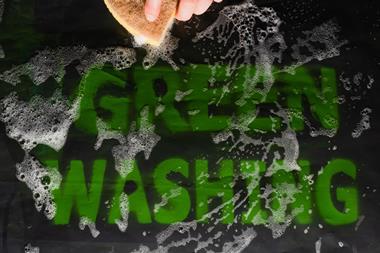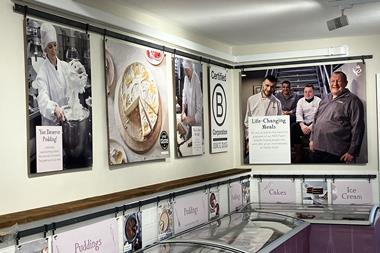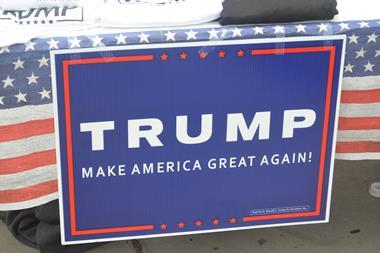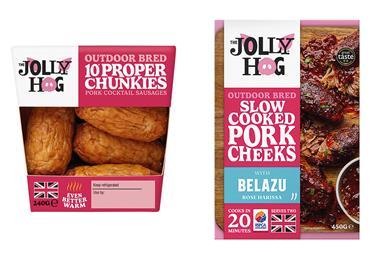The seventh annual Trade Promotions Survey reveals supplier scepticism about the value of promotions. Ian Fermor and Martin Wheeler of Ebiquity report
The relentless rise in trade promotional activity shows no sign of slowing.
This week, the seventh Annual Trade Promotions Survey, conducted by The Grocer and Ebiquity, shows 71% of suppliers have ramped up activity in the past 12 months and nearly half expect the trend to continue in the next year.
This despite the fact that more than 80% of suppliers think trade spending is too high compared with 50% in 2005, and less than 60% believe their investment achieved the goals set by their business.
Unsurprisingly, suppliers are quick to point the finger at the retailers driving the agenda. Less than half believe retailers are pushing promotional strategies that “make sense for the category”. And while a third of suppliers say volume uplifts are holding up, a third say they are declining and the rest say they are stable.
But although there is a perception retailers are profiting handsomely, once the massive effect of product substitution and deferred purchase is factored in, retailers aren’t actually benefiting any more than suppliers. So why do retailers continue to push for ever more aggressive discounts? And why are suppliers kowtowing to their demands?
The short answer is that they feel they have little choice as they chase volume and share with heavy promotional activity. On the plus side, nine out of 10 suppliers regard promotions as the most effective way to drive volume growth and consumer appetite for promotions remains high.
However, most suppliers and retailers are working with simplistic models that fail to account for the true net impact of promotional activity on volumes and profit. There’s also an acceptance that the competitive marketplace is driving retailers to implement unprofitable deals in a bid to steal footfall from each other. How else can one explain the trend for “buy one get two free” type deals that are funded by suppliers at bogof levels?
The behaviour of individual retailer buyers is often driven by the pursuit of inappropriate, incomplete or contradictory KPIs. The logic goes: “If we can drive sales value up and maintain percentage margins then we must be winning.” However, implementation is often not detailed enough to properly link cause and effect. The deep discount deals that really drive category value growth are not usually margin-maintained and the cannibalistic deferred purchase damage that these deals cause is usually overlooked.
Suppliers and retailers are simultaneously chasing profit and share volume objectives and as a result they often end up “buying” market share from profit. Ebiquity recently completed an exercise for a grocery brand that demonstrated how a rationalisation of promotional strategy could quadruple operating profits at the cost of halving market share.
Such an example is extreme. The new promotional strategy would be challenging to implement in its entirety and a halving of market share would be difficult to justify to stakeholders. However, the exercise demonstrates the scale of the profit versus market share trade-off being made by grocery brands.
That’s not to say that all deep discount deals are bad. Properly supported activities on the right brands in the right categories can deliver enhanced profits for supplier and retailer alike, a win-win scenario benefiting consumers too. It is also clear that promotions in themselves do not damage grocery brands. Most of the UK’s strongest grocery brands have been promoting continually for over 20 years.
Yet storm clouds are gathering. In the survey, 81% of suppliers agree cost of goods (CoGs) inflation “could significantly disrupt our promotional strategy in the future”, and in the next five years most insiders expect to see current CoGs volatility evolve into strong inflation. This creates an immediate issue of suppliers trying to push through price rises to preserve margins.
With deals often pegged at round-pound levels, suppliers will struggle to control promotional efficiency as prices rise. There has been a good deal of product re-engineering to meet round-pound price points, but this can genuinely damage brands if quality suffers.
Often we find brands hypnotised by the actions of their closest rival. However, our detailed analysis of over 20,000 promotions has clearly shown that most competitor activity has a very limited impact on the base sales of rival brands. Our advice to suppliers is to focus on your own game, be prepared to have uncomfortable conversations with retailers and have the self-confidence to let competitors do as they will.
It is simplistic to suggest that everyone should ignore market share targets and focus exclusively on profit. The profit versus share trade-off is not going to go away. Stakeholders will continue to seek both top-line performance and bottom-line growth. Compromises have to be made. The question is whether suppliers and retailers have the correct insight into cause and effect to make the best compromises when it comes to managing promotions effectively.
If all the key players in the promotional game could see the net effect of their decisions, there would still be intensive promotional activity, but competition would focus on activities in the 30%-to-40% discount range rather than at 50% and beyond where, in most categories, everyone’s profits are compromised. The true “net” effect should account for cannibalisation within the brand and category during the promotion and, most importantly, during the weeks following the promotion.
Retailers and suppliers need to be able to step off of the year-on-year budgeting juggernaut, to understand the real level of consumer demand and to build rational promotional plans that most effectively satisfy this demand.
Focusing on real and sustainable base volume growth is the route to long-term profitability. Market share in heavily promoted categories is a misleading performance metric since market share becomes more a measure of how often and how deeply a brand promotes rather than a measure of brand strength. Making a clear distinction between base and promotional sales will ensure clearer decision-making and more robust budgeting and commercial planning.
With greater clarity of promotional cause and effect, the commercially irrational discount levels proliferating in the grocery industry will be tempered.
Ian Fermor is a director of Ebiquity, a leading player in marketing investment management, and Martin Wheeler is head of promotional effectiveness
Sign in to comment on this article
Not logged in before? Register for FREE guest access today.
You will be able to:
- Read more stories
- Receive daily newsletters
- Comment on stories
Advert



















No comments yet